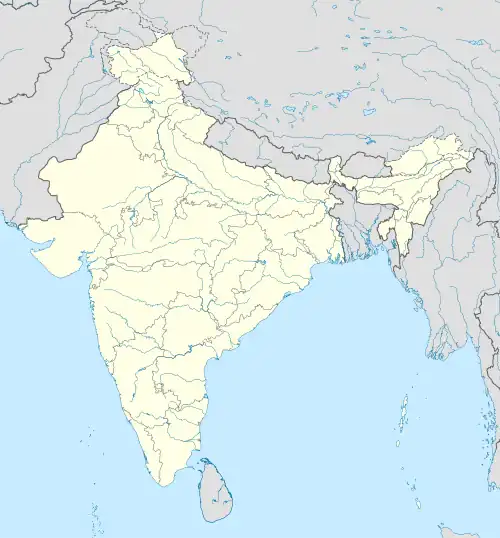𑀕𑀸𑀫
Ashokan Prakrit
Noun
𑀕𑀸𑀫 (gāma) m[1]
Alternative forms
Attested at Delhi-Topra and Lumbini.
| Dialectal forms of 𑀕𑀸𑀫 (“village”) | ||
|---|---|---|
| Variety | Location | Forms |
| Central | Delhi-Topra | 𑀕𑀸𑀫 (gāma) |
| Lumbini | 𑀕𑀸𑀫 (gāma) | |
| Map of dialectal forms of 𑀕𑀸𑀫 (“village”) | ||
|---|---|---|
 | ||
Descendants
- Prakrit: 𑀕𑀸𑀫 (gāma) (see there for further descendants)
References
- Turner, Ralph Lilley (1969–1985) “grāˊma”, in A Comparative Dictionary of the Indo-Aryan Languages, London: Oxford University Press, page 235
Prakrit
Etymology
Inherited from Ashokan Prakrit 𑀕𑀸𑀫 (gāma).
Noun
𑀕𑀸𑀫 (gāma) m (Devanagari गाम, Kannada ಗಾಮ) (Maharastri, Jain Maharastri, Ardhamagadhi)
- village
- c. 200 CE – 600 CE, Hāla, Gāhā Sattasaī 714:
- 𑀚𑀁 𑀅𑀲𑀭𑀡𑁄-𑀯𑁆𑀯 𑀟𑀟𑁆𑀠𑁄 𑀕𑀸𑀫𑁄 𑀲𑀸𑀳𑀻𑀡-𑀯𑀳𑀼𑀚𑀼𑀆𑀡𑁄-𑀯𑀺
𑀲𑀁𑀪𑀫𑀯𑀺𑀲𑀁𑀞𑀼𑀮𑀸𑀡𑀁 𑀢𑀁 𑀤𑀼𑀘𑁆𑀘𑀭𑀺𑀅𑀁 𑀢𑀼𑀳 𑀣𑀡𑀸𑀡𑀁- jaṃ asaraṇo-vva ḍaḍḍho gāmo sāhīṇa-vahujuāṇo-vi
saṃbhamavisaṃṭhulāṇaṃ taṃ duccariaṃ tuha thaṇāṇaṃ
- 2009 translation by Peter Khoroche and Herman Tieken
- That our village burnt down as though there were no help for it,
Despite the number of young men at hand, is the doing of your wicked breasts, which in the confusion were swaying about.
- That our village burnt down as though there were no help for it,
- jaṃ asaraṇo-vva ḍaḍḍho gāmo sāhīṇa-vahujuāṇo-vi
- 𑀚𑀁 𑀅𑀲𑀭𑀡𑁄-𑀯𑁆𑀯 𑀟𑀟𑁆𑀠𑁄 𑀕𑀸𑀫𑁄 𑀲𑀸𑀳𑀻𑀡-𑀯𑀳𑀼𑀚𑀼𑀆𑀡𑁄-𑀯𑀺
Declension
| Maharastri declension of 𑀕𑀸𑀫 (masculine) | ||
|---|---|---|
| singular | plural | |
| Nominative | 𑀕𑀸𑀫𑁄 (gāmo) | 𑀕𑀸𑀫𑀸 (gāmā) |
| Accusative | 𑀕𑀸𑀫𑀁 (gāmaṃ) | 𑀕𑀸𑀫𑁂 (gāme) or 𑀕𑀸𑀫𑀸 (gāmā) |
| Instrumental | 𑀕𑀸𑀫𑁂𑀡 (gāmeṇa) or 𑀕𑀸𑀫𑁂𑀡𑀁 (gāmeṇaṃ) | 𑀕𑀸𑀫𑁂𑀳𑀺 (gāmehi) or 𑀕𑀸𑀫𑁂𑀳𑀺𑀁 (gāmehiṃ) |
| Dative | 𑀕𑀸𑀫𑀸𑀅 (gāmāa) | — |
| Ablative | 𑀕𑀸𑀫𑀸𑀑 (gāmāo) or 𑀕𑀸𑀫𑀸𑀉 (gāmāu) or 𑀕𑀸𑀫𑀸 (gāmā) or 𑀕𑀸𑀫𑀸𑀳𑀺 (gāmāhi) or 𑀕𑀸𑀫𑀸𑀳𑀺𑀁𑀢𑁄 (gāmāhiṃto) | — |
| Genitive | 𑀕𑀸𑀫𑀲𑁆𑀲 (gāmassa) | 𑀕𑀸𑀫𑀸𑀡 (gāmāṇa) or 𑀕𑀸𑀫𑀸𑀡𑀁 (gāmāṇaṃ) |
| Locative | 𑀕𑀸𑀫𑀫𑁆𑀫𑀺 (gāmammi) or 𑀕𑀸𑀫𑁂 (gāme) | 𑀕𑀸𑀫𑁂𑀲𑀼 (gāmesu) or 𑀕𑀸𑀫𑁂𑀲𑀼𑀁 (gāmesuṃ) |
| Vocative | 𑀕𑀸𑀫 (gāma) or 𑀕𑀸𑀫𑀸 (gāmā) | 𑀕𑀸𑀫𑀸 (gāmā) |
Descendants
- Assamese: গাঁও (gãü)
- Awadhi: गांव (gāmv)
- Bengali: গাঁ (gã)
- Bhojpuri: गांव (gānv)
- Garhwali: गाउँ (gāũ)
- Old Gujarati: गाम (gāma)
- Hajong: গাও
- Hindustani:
- Kamta: গাঁও (gãü)
- Konkani: gā̃v
- Kumaoni: गाउँ (gāũ)
- Old Marathi:
- Modi script: 𑘐𑘰𑘄 (gāu), 𑘐𑘰𑘽𑘄 (gāṃu), 𑘐𑘰𑘌 (gāo), 𑘐𑘰𑘪 (gāva), 𑘐𑘰𑘽𑘪 (gāṃva) 𑘐𑘼𑘽 (gauṃ)
- Devanagari script: गाउ (gāu), गांउ (gāṃu), गाओ (gāo), गाव (gāva), गांव (gāṃva) गउं (gaüṃ)
- Marathi: गाव (gāv)
- Maithili: गांओ (gā̃o)
- Nepali: गाउँ (gāũ)
- Odia: ଗାଁ (gã)
- Punjabi:
- Romani: gav
- Sindhi: गांउ (gā̃u)
- Sinhalese: ගම (gama)
- Sylheti: ꠉꠣꠅ (gao)
See also
- 𑀡𑀅𑀭 (ṇaara, “city”)
References
- Pischel, Richard, Jha, Subhadra (contributor) (1957) Comparative Grammar of the Prakrit Languages, Varanasi: Motilal Banarasidass, page 366.
- Woolner, Alfred Cooper, An Introduction to Prakrit, Calcutta: Baptist Mission Press, 1917, page 200.
- Turner, Ralph Lilley (1969–1985) “grāˊma”, in A Comparative Dictionary of the Indo-Aryan Languages, London: Oxford University Press, page 235
This article is issued from Wiktionary. The text is licensed under Creative Commons - Attribution - Sharealike. Additional terms may apply for the media files.